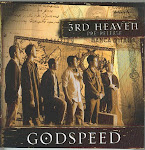Personally, I LOVE writing for children's magazines! It has taught me to write "tight". Kids can't wait for the next issue to arrive in their mailbox, and some children who won't read books WILL read magazines. What an opportunity we have to introduce kids to the world around them, and turn them into readers! If you're just beginning your journey writing for children's magazines, check out htis list of some of the basic elements needed for writing a magazine story.
- MAIN CHARACTER: Will your readers LIKE the main character? Is he or she too “perfect” or did you give your protagonist a “wart” (flaw)? Is your character believable to children?
- THEME: The theme is the main idea or message developed in your story. Is your theme universal and age appropriate? Is your story too preachy? Does the plot (what happens in the story) follow the thread of your theme from beginning to end? Did you avoid going off on “rabbit trails” (another theme or two)? It’s important to stick with only ONE theme all the way through or you will confuse the young reader with mixed messages.
- CONFLICT: Is your character’s conflict, challenge, or dilemma age appropriate? Is it resolved by the protagonist without an adult taking over and "fixing" everything?
- SHOW DON’T TELL: Are you “showing” instead of "telling," through dialog and the actions and reactions of the characters? There are very few illustrations in a magazine story. Your words must create “illustrations” in the readers mind.
- STORY STRUCTURE: Does your story have a clear beginning, middle and end? Do you know the role of each part? Check these out:
few paragraphs to “hook” the reader?
Middle: Does the problem intensify and build in a series of several episodes (usually
three), each one more difficult than the the last?
Ending: Is the problem resolved in a way that will not disappoint the reader? Is the ending satisfying? Has the character grown in some way or had a “come to
realize” moment?
- FACT CHECK: Are your facts correct for fiction and non-fiction? Kids are smart! They'll catch wrong information about animals, the environment, and lots more. So will editors!
- FINAL MANUSCRIPT: Did you check the spelling and grammar? Is your story presented in proper manuscript format? Did you follow the magazine publisher’s guidelines and stay within the word count? If they accept simultaneous submissions and you’re sending it to several publishers, did you mention that at the end of your cover letter?
Copyright 2008 Sheryl Ann Crawford























1 comment:
Sherri, I have printed out your material and plan on using it as a guideline as I write my magazine articles. Thanks!
Gloria
Post a Comment